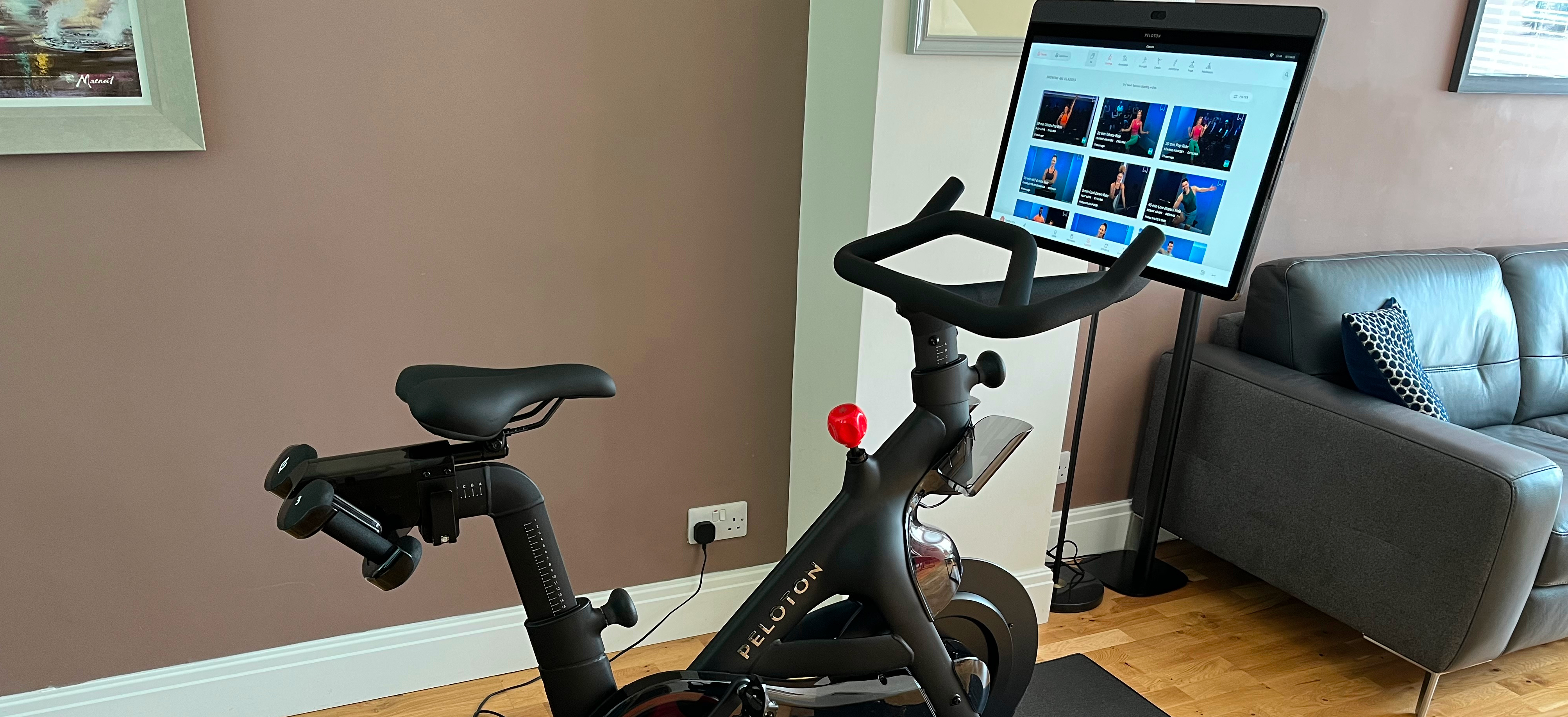Our Verdict
The Peloton Bike+ delivers on all fronts, with a seamless set-up process, excellent audio and visual tech, and access to live and on-demand classes for on and off the bike. The only downside is the price: comprising the initial purchase cost, as well as ongoing subscription fees for Peloton’s All-Access Membership.
For
- 23.8in HD rotating touchscreen
- Surround sound
- Compact 120cm x 60cm footprint
- Extensive live and on-demand classes
Against
- Expensive
- Monthly subscription fees for duration of use
You can trust Coach
Launched in 2012, Peloton pushed to the front of the pack for those hunting the best exercise bike, and it has become synonymous with luxury fitness. The bike brought together technology, hardware and enthusiastic instructors to create an immersive at-home fitness experience for its members. Peloton’s core base of fans provides a sense of community and healthy competition on the platform.
A key selling point is the app, which includes an array of exercise and mindfulness classes, from yoga and Pilates to strength training and meditation. With new projects such as an audio collaboration with Ed Sheeran, Peloton continues to push the boundaries of what a fitness platform can do.
Is initiation into the Peloton clan worth the investment? Let’s find out.
Peloton Bike+: Price And Availability
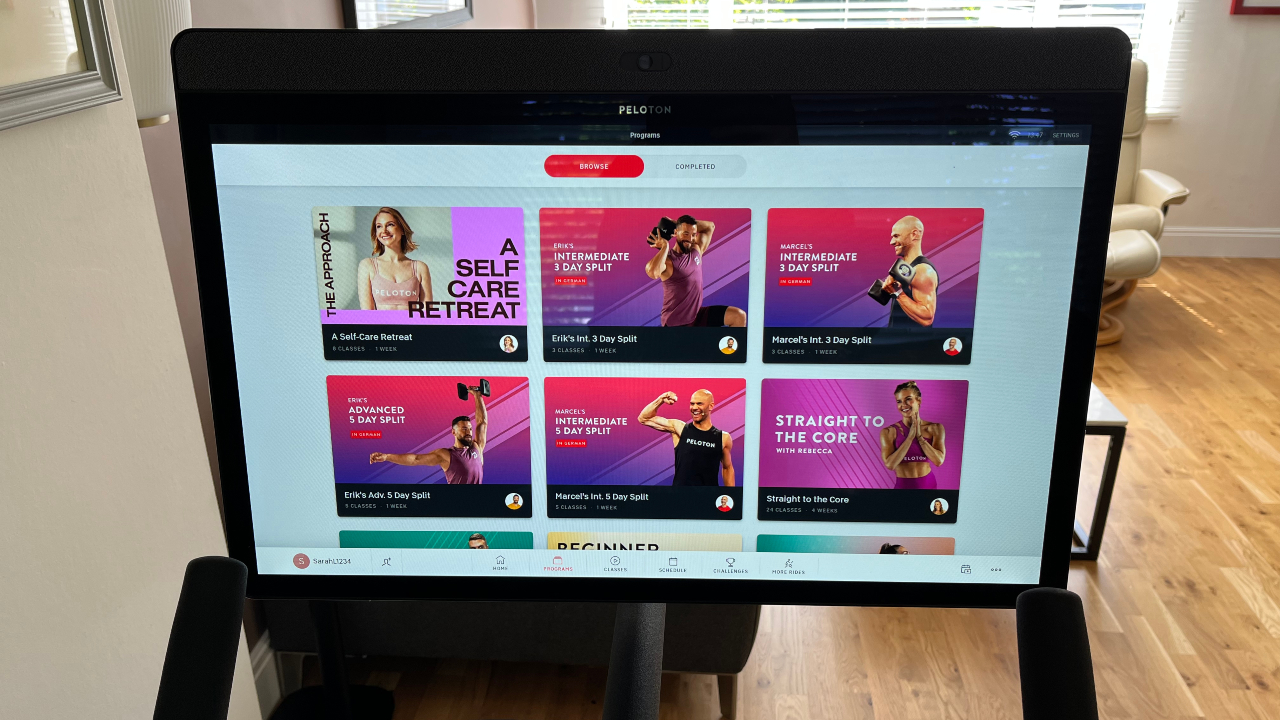
The price tag is hefty. The Bike+ Basics package costs $2,495 in the US and £1,995 in the UK, including the bike, home delivery and assembly. The Bike+ Starter package is $2,695/£2,180 (currently $2,295), including cycling shoes, light weights, a bike mat, home delivery and assembly. View the different package options on the Peloton UK and Peloton US websites.
To get the most out of the bike, you also require a monthly subscription of $44/£39 for Peloton’s All-Access Membership. This provides access to Peloton’s library of live and on-demand classes from your Bike+, phone, smartwatch, tablet or TV, plus individual user profiles for each member of your household.
The Peloton Bike+ comes with a 12-month limited warranty covering parts and labor (including the HD touchscreen) and five years of coverage on the frame in the US and the UK.
If you change your mind after purchase, Peloton offers a 30-day trial period, after which you can arrange free pick-up and a full refund if you’re not satisfied.
Peloton often reduces the price of the Peloton Bike+. Browse our Peloton coverage for the latest deals and check these Peloton Black Friday deals to see how much you could save in the biggest sale of the year.
How I Tested This Bike
I tested the Peloton Bike+ for six weeks, cycling on it several times a week. I used the Bike+ screen to display workouts from the Peloton One app, and also connected Bluetooth headphones for audio.
The Set-Up
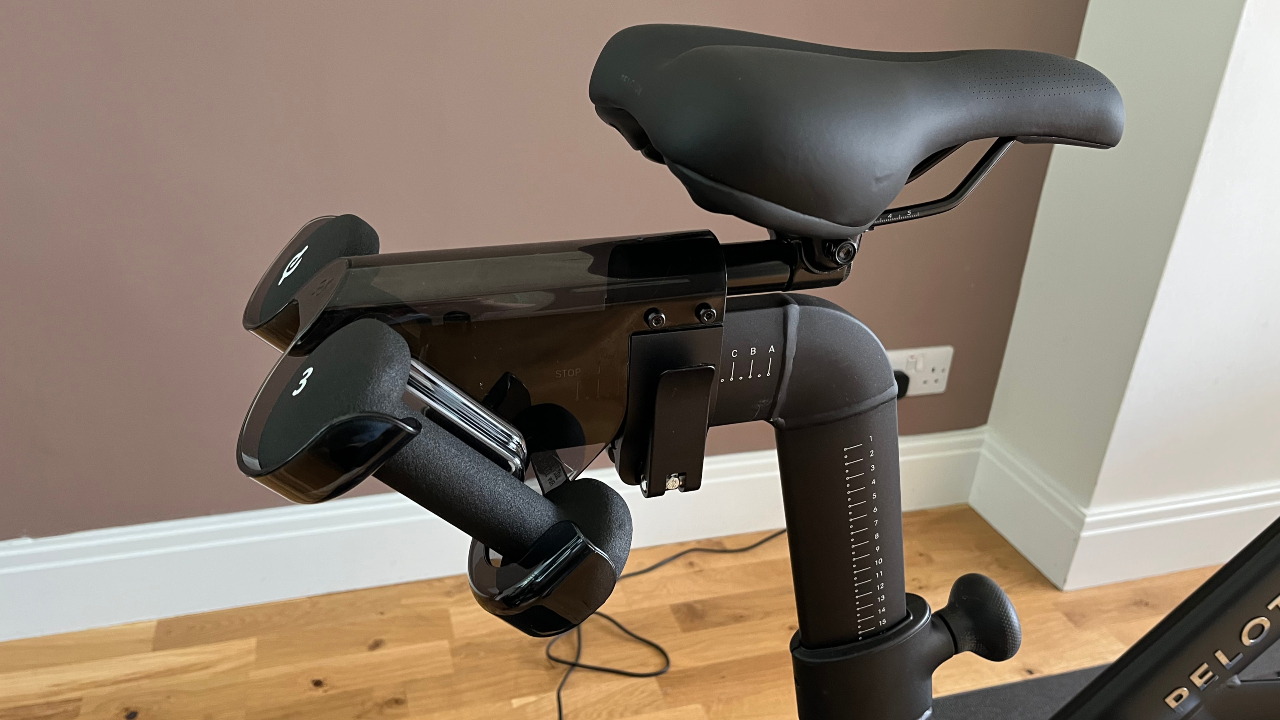
An immediate benefit of picking Peloton over a competitor is the company’s set-up crew. Two employees carried the Bike+ up the stairs to my apartment, making sure it was installed correctly, explaining how to use the bike and cycling cleats, and checking that my Peloton app login was working.
If you’d rather complete the process yourself (or need a refresher on set-up details at a later date), the Bike+ includes video tutorials on the best set-up for saddle height and distance, how to clip your cleats in and out, and instructions for how to use the bike. There’s also a printed user manual included for reference.
The bike is compact, with a 47in x 23in (120cm x 60cm) footprint; that’s smaller than the average yoga mat. The screen is designed to be turned and used for workouts off the bike, so it’s worth setting up in an area with extra space if you’re planning to use the cardio and strength classes.
The Bike+ is designed to accommodate most riders, and is suitable for those up to 6ft 4in (195cm) tall and 297lb (135kg) in weight. The seat position and handlebar height are adjustable, and the Peloton 101 tutorials walk you through how to change these and what will be an optimal position for you.
Wide Perspex bottle holders are beneath the handlebars, so it’s easy to keep hydrated. Weight holders are at the back of the bike, near the saddle, keeping them conveniently off the floor. The resistance knob allows manual control and auto-resistance, which automatically adjusts your resistance according to the instructor’s cues.
Accessories in the Starter package include indoor cycling shoes with cleats, dumbbells and a double-sided exercise mat. The shoes are comfortable and adjustable, with a quick ratchet clip and hook and loop straps so you can tighten or loosen as required. I found the shoes comfortable, though on the smaller side—it would be worth sizing up if you tend to fit a wider shoe. The dumbbells are cast-iron weights with a sweat and slip-proof rubberized coating.
The Experience
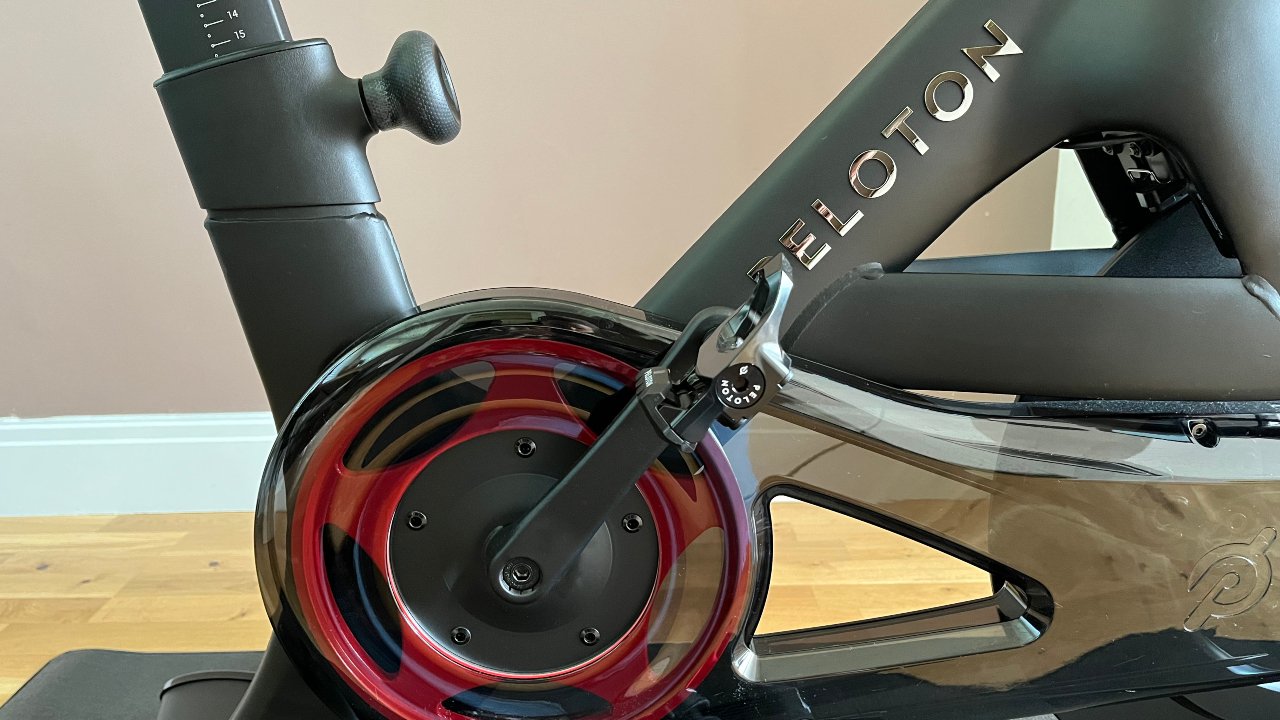
It’s hard to fault the experience of using the Bike+. It’s smooth, almost silent, and stable, even during intense cycling sprints standing out of the seat. The handlebars are wide and maintain a good amount of grip even when sweaty. The pedal clips feel secure, which makes clipping out challenging, but are reassuringly solid during fast sprints. The resistance knob is sensitive and responsive, allowing for quick manual increases or decreases with just a twist.
One of the best features of the bike is the 360° HD rotating screen. It’s large (23.8in) and has an anti-reflective display to reduce glare, which was helpful for me because I tested it with the screen facing a window. The screen has full rotation, so you can swivel it and set up your yoga mat or weights area nearby. The touchscreen is responsive and the screen quality is crisp.
The sound is an immersive experience, with front-facing speakers and rear-facing woofers. If you prefer, you can connect Bluetooth headphones or plug in wired headphones.
During rides, the screen displays all the stats you would expect, from cadence range (RPM) and resistance to total power output score. A feature I particularly liked is the leaderboard, allowing you to compete in real time against other participants. If you’re not keen on checking your metrics during the ride, you can hide them and focus on the instructor instead.
The Home screen shows a selection of recommended classes based on your previous picks, along with a collection of workouts and upcoming live sessions. You can filter on-demand classes by instructor, so it’s easy to find your favorites. The Programs tab includes sets of workouts planned between one and eight weeks long, such as Peak Your Power Zones, which is designed to improve your Functional Threshold Power (FTP) in eight weeks.
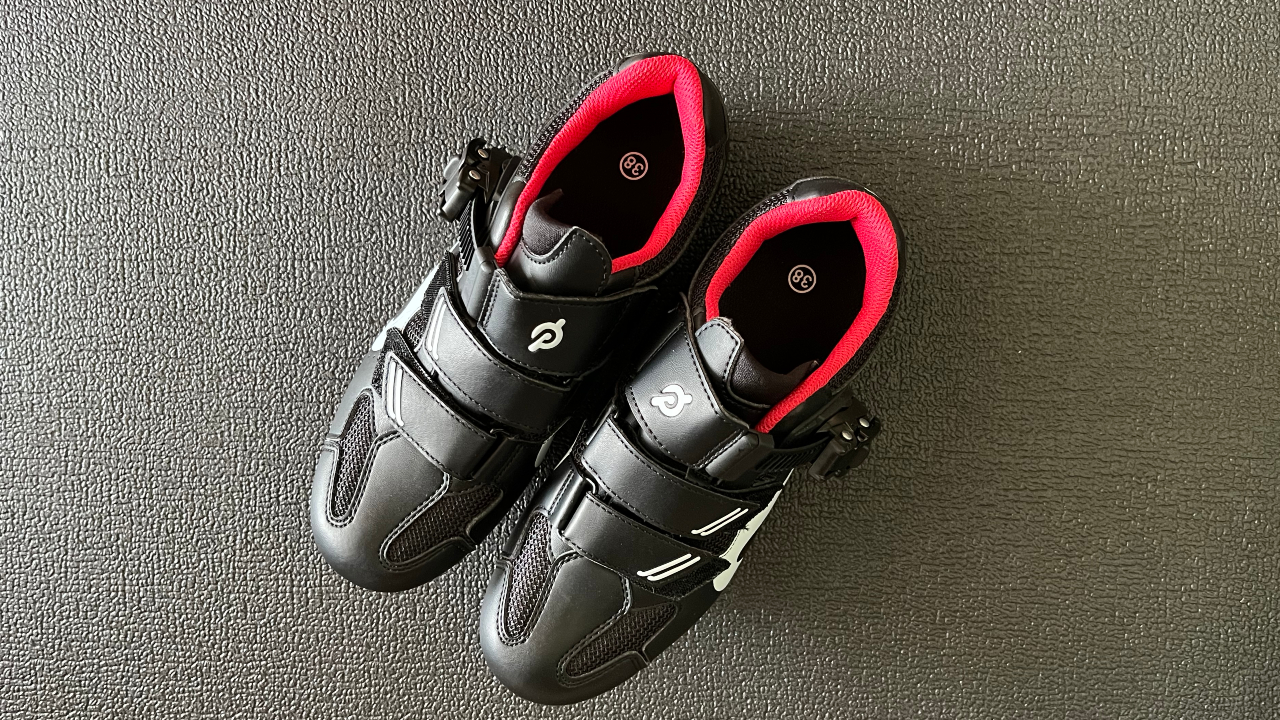
You can browse the available sessions under the Classes tab, with filtering options including length, instructor, class type, music, subtitles, and class language. Peloton has a large following in Germany, and classes that are in German are labeled. Unlabelled classes are in English. The Schedule tab shows upcoming live sessions, which you can opt into and add to your personal schedule.
Peloton members are often motivated by challenges and competition, and this shows in the Challenges tab. You can view the current and upcoming challenges to join, as well as see how many people are participating. In the popular Annual, each minute you spend taking a class on the Bike, Tread or Peloton App counts towards a yearly total.
You can opt for non-workout rides under More Rides. The Just Ride mode means pedaling at your own pace while recording your metrics, while the Scenic Ride mode displays locations from around the world. Peloton Lanebreak is a gamified ride, where you have to match your metrics to the cues on the screen. While this was fun to play for half an hour, and reminded me nostalgically of Guitar Hero, I would stick to instructor-led workouts going forward.
The slick production of the Peloton app and the sheer energy of the instructors make the content on it enjoyable and motivating. The non-cycling options are extensive, too, covering strength, yoga, cardio and more. See our review of the Peloton App.
Peloton Bike Vs Bike+: What’s The Difference?
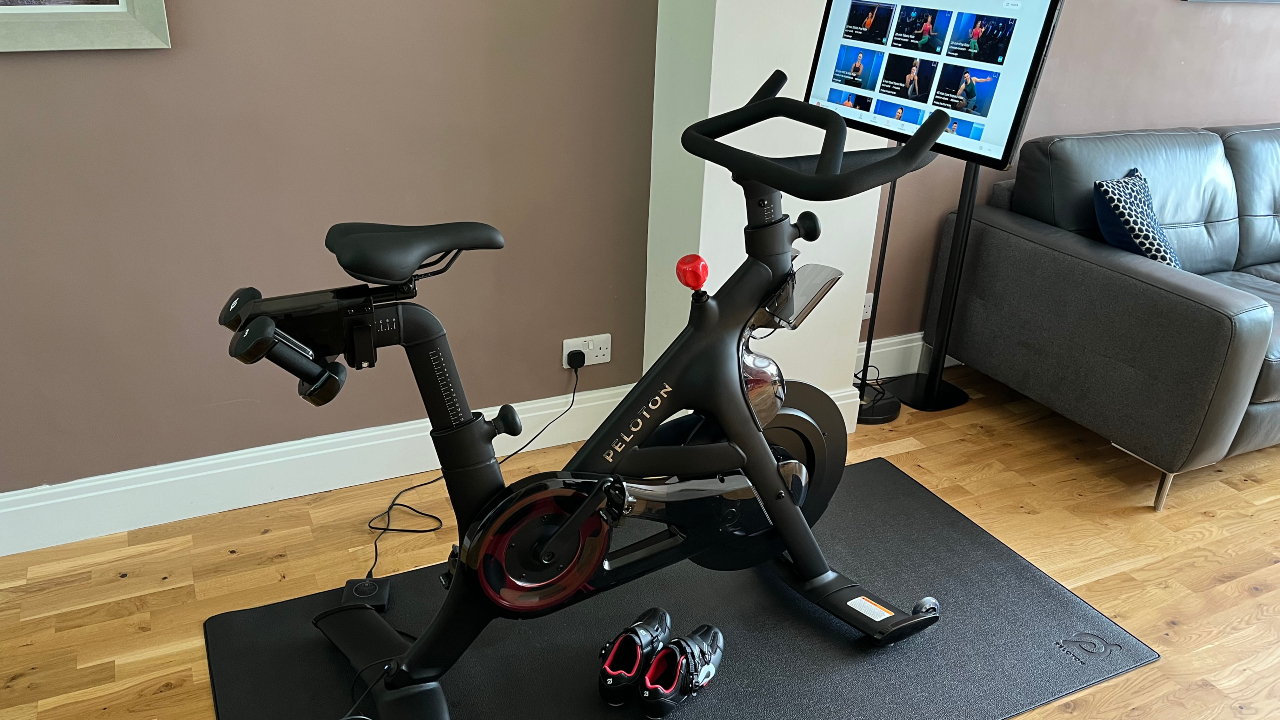
The Bike+ is Peloton’s top-of-the-range product, and so there are differences between the two bikes. The screen on the Bike tilts but it doesn’t rotate, so you can’t use it for workouts off the bike. It’s also smaller (21.5in) and doesn’t have an anti-reflective finish. Peloton says the audio quality is better on the Bike+. While both have the resistance knob for manual control, the auto-resistance feature is exclusive to the Bike+. Both models take up the same amount of floor space.
The biggest difference is the initial price. The Peloton Bike is $1,445/£1,345 without any extras, compared with the Bike+ at $2,495/£1,995. The membership fees are the same, regardless of the model you choose.
Is The Peloton Bike+ Worth It?
The Peloton Bike+ is a joy to use. It’s exceptionally well designed and almost silent, and it takes up minimal space when compared with other indoor exercise bikes. The set-up process is effortless. The app has a wealth of workout classes, all with engaging instructors who are easy to follow, and who lead well-planned classes to suit a variety of music tastes.
However, you pay a premium for the experience. Becoming part of the Peloton pack requires around $2,500/£2,000 as an initial outlay, and around $530/£470 a year in membership fees. For the most committed indoor cycling devotees looking to recreate a spin studio class at home, the experience may be well worth the price.

Sarah is an experienced health, fitness, nutrition and beauty writer, and was previously health editor at BBC Good Food. She has contributed reviews, interviews and features to Coach since 2019, covering exercise bikes, fitness trackers and apps, among other topics. In her free time, she can be found hiking, swimming, cycling or trying (and failing) to do a headstand on a yoga mat.
